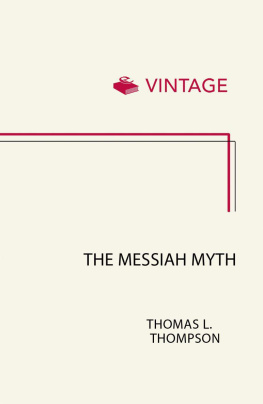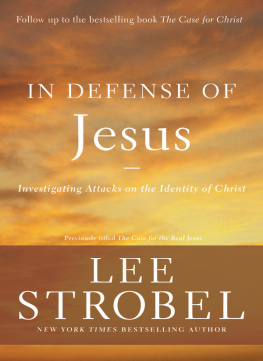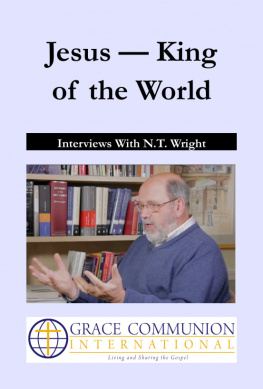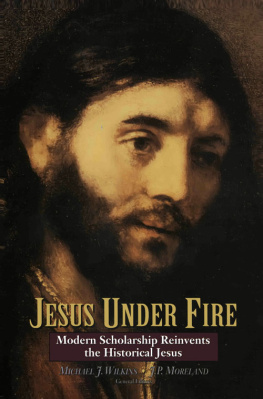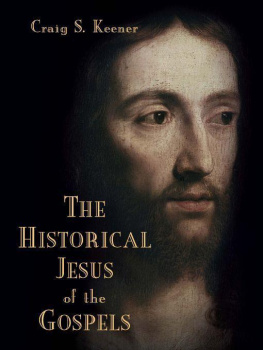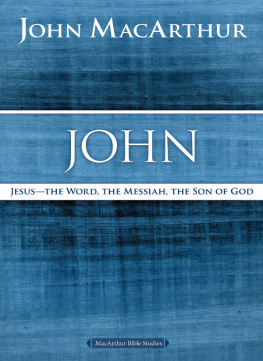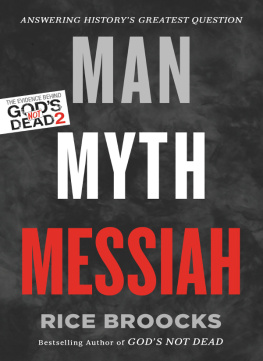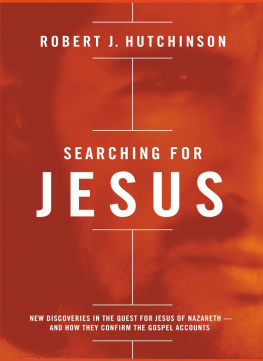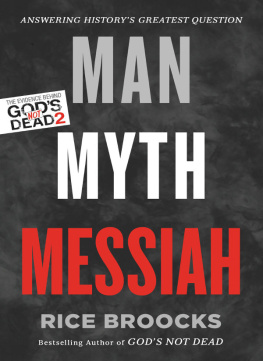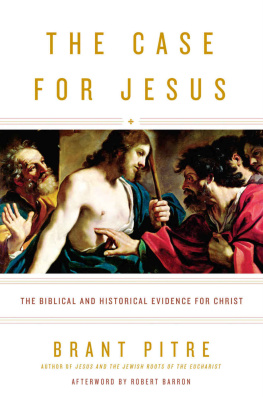C ONTENTS
About the Book
Since the eighteenth century, scholars and historians studying the texts of the Bible have attempted to distil historical facts and biography from the mythology and miracles described there. That trend continues into the present day, as scholars dissect the gospels and other early Christian writings to seperate the Jesus of history from the Christ of faith. But in The Messiah Myth Thomas L. Thompson argues that the quest for the historical Jesus is beside the point, since the Jesus of the gospels never existed.
Like King David before him, the Jesus of the Bible is an amalgamation of themes from Near Eastern mythology and traditions of kingship and divinity. The theme of a messiah a divinely appointed king who restores the world to perfection is typical of Egyptian and Babylonian royal ideology dating back to the Bronze Age. In Thompsons view, the contemporary audience for whom the Old and New Testament were written would naturally have interpreted David and Jesus not as historical figures, but as metaphors embodying long-established messianic traditions. Challenging widely held assumptions about the sources of the Bible and the quest for the historical Jesus, The Messiah Myth is sure to spark controversy and heated debate among believers and sceptics alike.
About the Author
Thomas L. Thompson is the author of Early History of the Israelite People and The Bible in History: How Writers Create a Past . He currently teaches in the prestigious Biblical Studies programme of the University of Copenhagen. He lives in Copenhagen, Denmark.
Also by Thomas L. Thompson
The Mythic Past
The Early History of the Israelite People
The Historicity of the Patriarchal Narratives
To
Ingrid Hjelm
A CKNOWLEDGMENTS
This book began in a course I presented together with Thomas Bolin at Marquette University a dozen years ago. In the discussions I shared with Thomas and the students, some of the essential perspectives of this present book first took shape. Not least among them is the recognition that the common theological principles implicit in the writing of the gospels and the Hebrew Bible hardly support the separation that is usually assumed in todays scholarship. Such separation, of course, has its roots in a postbiblical development of antagonistic and separate Jewish and Christian identities during the second and third centuries CE . This literature reflects a common intellectual engagement of its writers in the Mediterranean and Southwest Asian worlds of the Persian, Hellenistic and Greco-Roman periods.
I wish to thank my students and the members of the Old Testament graduate seminar in the Department of Biblical Studies in Copenhagen, from whom I have gained much insight and advice relating to the issues of this book. My colleagues have strongly supported my efforts to understand these issues. Professor Niels Peter Lemche, with whom I share many interests, encouraged my questions about the implications of intellectual history that dominate the present study. Bodil Ejrnss work on the Psalms of the Dead Sea Scrolls has encouraged me to investigate the development of themes in biblical poetry. My editor, Chip Rosetti, has helped much in clarifying the books argument, and Jim West has caught countless mistakes in my language and presentation. My copyeditor, Chrisona Schmidt, has caught many inconsistencies in my writing style. I must also thank my stepson, Andreas Hjelm, for his support and help with my computer. I am most grateful to my wife and colleague, Ingrid Hjelm, to whom I dedicate this book. She followed this book through the different stages of its development, criticizing and supporting it. She herself is responsible for central contributions to todays scholarship that have changed my thinking and helped lay the foundations for this study, particularly the figure of Hezekiah, whose tears of humility saved Jerusalem from Sennacheribs siege; an explication of the literary techniques with which the patterns of biblical stories have served to develop a never-ending chain of reiterative narrative and a historical understanding of the implicit competition between the two interrelated religious traditions of Samaria and Jerusalem during the Persian and Hellenistic periods. Ingrid ever directed my attention to this historical context of the literature I wish to understand.
T HOMAS L. T HOMPSON
Copenhagen, November 2004
The Messiah Myth
The Near Eastern Roots of Jesus and David
Thomas L. Thompson

P REFACE
This book attempts to answer the question I first raised some five years ago: What is the Bible if it is not history? In The Mythic Past, I wrote confidently that the Bible is not a history of anyones past and that the Bibles story of the chosen and rejected Israel presented a philosophical metaphor about mankind losing its way. But the question of what information in the Bible might be used by historians to write a history of Palestine is a false one and a distraction. Historians need evidence for their historical constructions and, without evidence, history is appropriately silent. That the Bible alone offers no direct evidence about Israels past before the Hellenistic period is not because it is late and secondarythough surely that should give pause to the most conservative of historiansbut because the Bible is doing something other than history with its stories about the past.
In discussions about both monumental inscriptions and biblical narratives, historians tend to place events in a demythologized space, which they themselves create. The intention is to displace the mythic space to which biblical and ancient texts have given voice. Whether one is dealing with an army led by God and meeting no resistance, a heroic king marching through the night to attack at sunrise orin victoryreturning the people to faithful worship and the abandoned temple to its god, absence of attention to the storys world ignores the function of ancient texts. The further failure to weigh our texts against comparable literature cripples reading by neglecting the stereotypical quality of biblical tropes. Rhetorical strategies such as the logic of retribution, reiterative echoes of legends past and ever illusive irony are lost in the historians search for a past that shifts the readers attention from the story to an imagined past. The assumption that the narratives of the Bible are accounts of the past asserts a function for our texts that needs to be demonstrated as it competes with other more apparent functions.
The question is whether the modern history of Palestine, Syrias southern fringe, is concerned with the same kind of questions as biblical interpretation. Are archaeologists and historians dealing with the same kind of past as the Bible does? This, I think, is the central question of the current debate about history and the Bible, rather than the questions that have dominated. Can biblical stories be used to write a modern history of the ancient pastwhether of the individuals or of the events in which they participate? Even when confirmation of the historical references is availableas with inscriptions relating to Sennacheribs invasion of Palestine at the close of the eighth century BCE our historical information is formed by the extrabiblical and archaeological sources. The Bible uses such historical information for other purposes, in the way that literature has always used what was known of the past.
Next page
